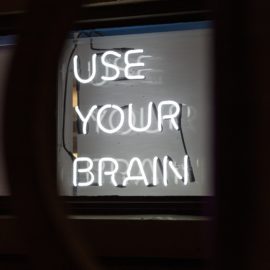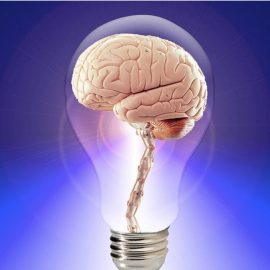

This article is an excerpt from the Shortform book guide to "The Righteous Mind" by Jonathan Haidt. Shortform has the world's best summaries and analyses of books you should be reading.
Like this article? Sign up for a free trial here .
What’s the difference between left and right politics in America? How are the perspectives and values different?
Jonathan Haidt answers these questions in his book The Righteous Mind. He discusses the difference between left and right ideologies from the perspective of moral psychology. He argues that liberals and conservatives have different narratives about the country, and he explains why liberals have a hard time understanding conservatives.
Read more to learn about the difference between left and right.
Liberal and Conservative Stories
One way to see the difference between left and right is to consider their narratives. Conservatives and liberals in America have different foundational stories about the country.
Conservatives since the Reagan era argue that America used to be a beacon of liberty, but liberals have attempted to ruin it by creating bureaucracy and tax burdens that stunt growth while also opposing faith and God. They took money from good, hard-working people and gave it to lazy people living on welfare while lionizing evil promiscuity and a “gay lifestyle.”
Liberals argue that there used to be dictatorial, oppressive regimes that governed the world, which virtuous people—through time and effort—overthrew. They then founded democracies and started fighting for equal rights for all, creating laws and government programs that could benefit everyone.
The conservative narrative is the heroic beating back of hordes attempting to overrun their lifestyle and the liberal narrative is the heroic triumph over those more powerful.
The conservative narrative relies on a little bit of the care foundation (from Haidt’s Moral Foundations Theory) and a lot of all five of the other moral foundations. The liberal narrative relies on only the care, fairness, and liberty foundations. This is a significant factor in the difference between left and right ideologies.
Conservatives can more easily understand the liberal narrative because all of the foundations that the liberals rely on they rely on as well.
Liberals have a harder time understanding the conservative narrative because they can’t understand the foundations of loyalty, authority, and sanctity. They believe that these foundations are often immoral: Liberals argue loyalty to country leads to exclusion of immigrants and many non-white Americans. Belief in authority is congruous with belief in oppression. And sanctity is a religious argument that often provides the foundation for homophobia.
Blind Spots
Liberals, though, have significant blind spots when it comes to understanding conservatives. Just like liberals, conservatives are interested in creating the best possible society.
Haidt realized this while reading a volume of Conservatism, a compendium of conservative thought. The conservative intellectuals in Conservatism (who Haidt believes are different from the modern Republican Party) argued much of what this book argues: Humans are imperfect and overconfident, and so we create theories of the world and morality based on reason rather than an understanding of history and humans’ intuition.
Conservatives argue that people need outside constraints to behave properly and thrive. Without them, people will cheat, and social capital, or trust, will begin to decline.
One difference between left and right is how they regard and leverage moral capital, or the resources necessary to sustain and grow a moral community. Think about a commune without the religious aspect: Communes that promote self-expression and tolerance more than loyalty might attract more new members, but they would have a harder time surviving than those that live by strict regulations that better suppress selfishness. Conservatives understand the value of moral capital.
Moral capital is a mixed bag. It leads to suppressing selfishness, but it also leads to suppressing dissent. You can often find it in fascist nations or cults.
However, when considering changes to society, always consider how they will change a society’s moral capital. This is a blind spot for the left: It is why communist revolution often ends in despotism and why liberal reforms are often ineffective. Liberalism changes too much too quickly in the goal of bringing about freedom and equal opportunity. Conservatism can better preserve moral capital, but they fail to see the need for changes to our society to move with the times or protect the vulnerable.
Yin/Yang Politics
Considering the difference between left and right, each side has points that the other can learn from. For the purpose of understanding some of these points in modern American society, we’ll split up conservatives into social conservatives and libertarians, who have different ideologies and goals from one another.
First, we’ll identify the most sacred principle of liberals: caring for and freeing victims of oppression.
- Resulting Sub-Principle #1: Governments should reign in corporate superorganisms. Corporations have grown so much that the only forces that are powerful enough to stop them are governments that can still tax them and divide them based on regulations. Corporations have one goal, which is to maximize profit for their shareholders, and so will do essentially anything to achieve that goal. Corporations operate in secret so that they can act more capriciously. If governments don’t make corporations operate in full view of the public, there could be consequences for the environment and for the most vulnerable in society.
- Resulting Sub-Principle #2: Some problems are solvable by regulation. When Americans started buying more cars in the 1950s and 60s, lead in gasoline made its way into the water and bloodstreams, harming the public and especially children. The Carter administration started phasing out gas with lead in it, and while the Reagan administration gutted the EPA and halted this effort, congressmen from both sides of the aisle in the 1990s completed the job. This led to lead levels in children’s bloodstreams dropping significantly and much better health outcomes, including higher IQs in kids. Additionally, studies argue that the phaseout could have been responsible for at least half of the drop in crime in the 1990s. Lead interfered with the development of kids’ brains, which led to higher crime rates. Rather than going with the cheapest option in the short term, government regulation solved some huge problems in American society.
Libertarian counterpoint: Markets work. Imagine if we had the sort of multileveled, partially government subsidized and controlled system for buying groceries that we have for health care in the U.S. Premiums for buying groceries would go up, and there would be no way of properly regulating prices from the store. Some people wouldn’t be able to afford groceries, the store would have no reason not to charge absurd markups to the government, and before you know it, a can of peas would cost $30 for the government, with our tax dollars, to buy. It is only working markets that could provide healthcare at the lowest possible price, just as they do with groceries. There’s an open market for LASIK surgery, for example, which has driven prices down by 80 percent since the surgery debuted. We should listen better when libertarians talk about the “spontaneous order” of allowing people to choose. Liberals sometimes prefer the design of socialist economies, which can lead to utilitarian disaster, as people don’t cooperate in large groups when they think others are free riding.
Social conservative counterpoint: Don’t destroy the hive to help the bees. Large-scale societies are already miraculous achievements. We’re products of multilevel selection, and we need groups to continue to succeed, even if some groups are exclusionary. If we destroy all groups, we destroy all moral capital. In one study, Robert Putnam found that ethnic diversity in communities leads to a reduction in social capital. Ethnic diversity reduces bridging capital, or trust between groups, as well as bonding capital, or trust within groups. Liberals’ wish to help those least fortunate often leads to changes that can weaken groups, traditions, and moral capital. As an example, allowing students to sue their teachers and schools has led to an erosion of authority in schools that harms the poor most.
Understanding the difference between left and right from the perspective of moral psychology can bring new insight into the current political conversation.

———End of Preview———
Like what you just read? Read the rest of the world's best book summary and analysis of Jonathan Haidt's "The Righteous Mind" at Shortform .
Here's what you'll find in our full The Righteous Mind summary :
- Why we all can't get along
- How our divergent moralities evolved
- How we can counter our natural self-righteousness to decrease political divides






